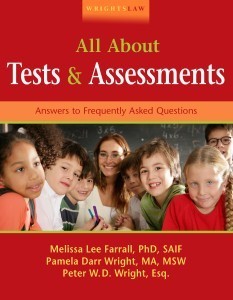You may have a question that has already been asked…and answered.
- Scroll through the Q and As
- Click the topic you want
- On your browser tool bar, click Edit > find > then type a search term in the find box.
Topics A through K | Topics L through Z
 ESL / ELL: English Language Learners
ESL / ELL: English Language Learners
from amber: please help me find laws and parent resources for ELLs with disabilities
from JG: Your local parent center should be able to help you find this state-specific information: http://www.parentcenterhub.org/find-your-center/.
I know of few resources that address the interaction of both categories, but you can check out these…
ELL resources from OCR at the Dept of Ed: http://www2.ed.gov/about/offices/list/ocr/ellresources.html
Colorin Colorodo: http://www.colorincolorado.org/
The Civil Rights Act and the Equal Education Opportunities Act address the rights of students with regard to race, color, religion, sex, or national origin, regardless of disability status. The CRA prohibits discrimination against students based on membership in a protected class. The EEOA requires schools to help qualified students overcome barriers to equal participation. These two laws and related case law provide a right to ELL instruction.
These are all federal laws. Your state will have its own special education regulations, as well as regulations regarding ELLs (or ESLs, ESOLs, LEPs, or CLDs – states use different descriptors). Your state may also offer guidance about addressing the needs of students with membership in both classes.
Amber –There is no federal law that exclusively addresses students in both categories. Here is what we do have…
The ADA and Section 504 address the rights of students with disabilities, regardless of ELL status. The ADA prohibits discrimination against students with disabilities. Section 504 entitles qualified students with disabilities to a free and appropriate public education.
IDEA is the federal special education law. It offers a number of rights to eligible students with disabilities, regardless of ELL status. It also offers specific rights to eligible students whose native language is not English. It entitles them to evaluations in their native language and to have their language needs considered when the IEP is developed.
from Chuck: A report from the federal Institute of Education Sciences highlights the challenges and lack of research for identifying English-language learners who also have disabilities. The document outlines policies and best practices from 20 states with high populations of ELL students. Education Week Teacher (tiered subscription model http://blogs.edweek.org/edweek/speced/2015/07/ELL_and_special_education.html
Assessing the English Language Learner
Learn why assessing children who are becoming proficient in English requires special expertise. Evaluators must distinguish between ELLs and learning disability issues.
Wrightslaw: All About Tests and Assessments, Chapter 15: Assessing English Language Learners (ELLs) explores how multicultural factors affect assessments and provides a Table of Tests that assess the skills of ELLs.





If a student has an IEP (qualification category is Autism) and he is also an English Learner, who is responsible for providing English Language Development?
If a student is already ESL in school, do they need to be made 504 as well?
Is the Q&A database available online?
Discussion on these Q and A Database topics continues indefinitely online.
A – E
F – I
L – O
P – Z
You’ll find more Q and As from 2008-2015 at these links.
Topics A – K
Topics L – Z